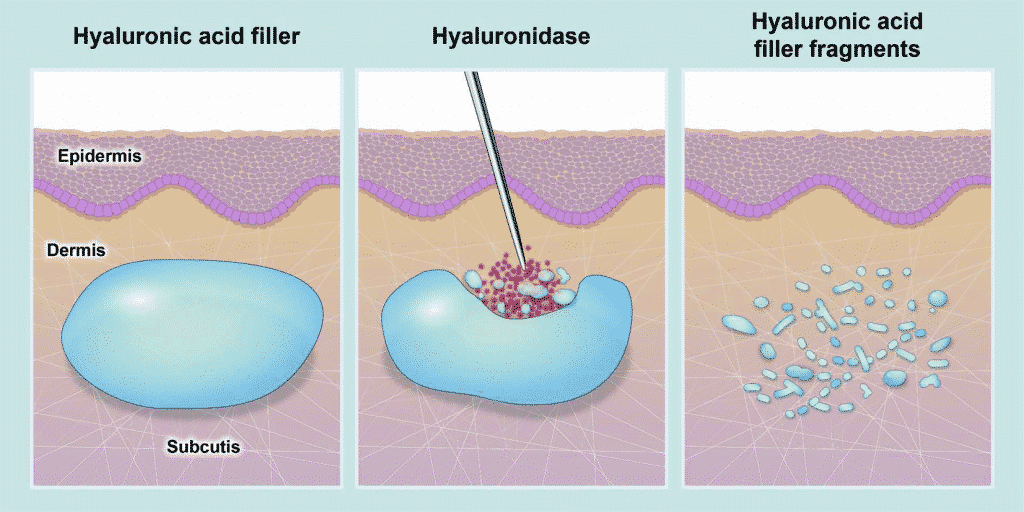Watch the video now:
How Social Media is Changing the Face of Beauty: The Increasing Popularity of Fillers and Botox Among Young Women
In the age of social media, beauty ideals are highly emphasized and the use of aesthetic procedures such as fillers and botox has become increasingly popular among young women all over the world. However, many people fail to recognize that these treatments are medical procedures and come with serious risks.
In the past, fillers and botox were only associated with celebrities who could afford them. But with the rise of influencer culture and increasing affordability, these treatments are now accessible to more people. Unfortunately, the growing acceptance and popularity of fillers has led to them being viewed as just another beauty accessory, much like getting a spray tan or dyeing your hair. This trivialization of medical procedures is dangerous, as fillers are not without risks.

What You Need to Know About Dermal Fillers: An Overview of the Procedure and Its Uses
Dermal fillers, also known as soft tissue fillers, are substances designed to be injected beneath the surface of the skin to add volume and fullness. Most dermal fillers contain a natural substance called hyaluronic acid and are temporary. They can be used to correct moderate-to-severe facial wrinkles and skin folds, as well as for nose reshaping and increasing fullness of lips, cheeks, chin, under-eye hollows, jawline, and the back of the hand.

The Dark Side of Dermal Fillers: How Vascular Occlusion Can Cause Skin Necrosis and Irreversible Blindness
While some side effects of fillers, such as bruising, swelling, pain, redness, itching, or stiffness, are common and self-limited, there are also serious complications that can occur.
One of the most severe complications is vascular occlusion, which can occur when filler is accidentally injected into an artery. This can obstruct blood flow to the tissue supplied by the artery, leading to skin necrosis, which causes the skin to die, turn black, blister, and slough off, leaving a wound. Even worse, vascular occlusion can sometimes cause instantaneous, irreversible blindness if the fillers move backwards in the bloodstream of vessels important for the eye and block blood flow. There have already been 200 cases of blindness reported due to fillers.
It is essential to understand that medical procedures are never risk-free. The popularity of fillers should not lead to their trivialization, as the risks associated with them can be disastrous.
If you are considering fillers, it is important to go to an experienced injector, preferably a medical doctor. In some countries, such as the UK, individuals without a medical diploma are allowed to administer filler or botox, increasing the risk of complications.

Reversing Vascular Occlusion Caused by Dermal Filler Injection: The Role of Hyaluronidase
In cases where vascular occlusion occurs as a result of dermal filler injection, hyaluronidase can be used to dissolve the filler and restore blood flow to the affected area. By breaking down the hyaluronic acid molecules that make up the filler, hyaluronidase can help to quickly reverse the effects of the filler and potentially prevent tissue damage or necrosis. It is important to note that the use of hyaluronidase in cases of vascular occlusion should be done promptly and under the supervision of a trained medical professional, as rapid treatment can be critical to preventing serious complications.

The Future of Safe Fillers: How Artery3D is Revolutionizing the Injection Process
One way to further minimize the risk of complications is by using the Artery3D software, founded by plastic surgeon Dr. Benoit Hendrickx, which visualizes a patient’s individual facial arterial anatomy through Augmented Reality (AR). After registering your face in the app and getting an MRI scan of your face, the Artery3D software can identify all visible facial arteries and convert them into a 3D image. When your injector points the camera at your face, they can see all the blood vessels on your face and where they run, so they can mark these blood vessels and avoid injecting fillers into them.
This makes the chance of vascular occlusion and other severe complications very small.

When your injector points the camera at your face, they can see all the blood vessels on your face and where they run.
This makes the chance of vascular occlusion and other severe complications very small.
Conclusion
In summary, fillers may seem like a simple beauty accessory, but they are medical procedures that come with risks. The best way to minimize the risk of complications is by going to an experienced injector, preferably a medical doctor. Additionally, the use of Artery3D can further decrease the chance of severe complications. If you do decide to get fillers, it is essential to be aware of the symptoms of vascular occlusion and contact your doctor immediately if you experience them. Remember, safety should always be a top priority when it comes to aesthetic procedures.


